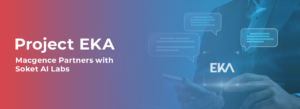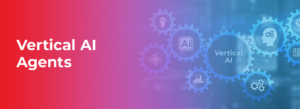Why End-to-End Data Labeling Solutions Are Essential
When building AI models, data is the driving force behind their success. But raw data doesn’t do much on its own—it needs to be labeled and organized to train machine learning algorithms effectively. This is where data labeling comes in.
Whether it’s classifying images, annotating text, or preparing audio files, data labeling is the first step in ensuring your AI delivers accurate and reliable results. Yet, many developers and startups struggle because traditional methods can be messy, time-consuming, and prone to errors.
That’s where end-to-end data labeling solutions take the stage. These streamlined platforms are transforming the way AI developers and data scientists handle this critical step—and we’re here to show you how.
Why Traditional Data Labeling Falls Short
If you’ve tried managing data labeling on your own, you probably know how complicated it can get. Fragmented workflows, poor quality control, and delays caused by manual processes are just some of the headaches that arise. For teams working with large, complex datasets, these inefficiencies can grind progress to a halt.
End-to-end data labeling solutions solve this problem. Instead of juggling multiple tools and processes, developers and scientists can access all the features they need in one seamless platform. Think of it as your all-in-one toolkit for training data mastery.
What Are the Benefits?
Adopting an end-to-end data labeling solution does more than just simplify workflows—it changes the game for AI developers and tech startups. Here’s why:
1. Improved Efficiency
Time is everything in technology development. End-to-end solutions allow data scientists to automate repetitive tasks, assign jobs to the right team members, and keep the labeling process running smoothly. Faster workflows mean quicker deployments of AI models—and a competitive edge.
2. Accuracy That Boosts Outcomes
AI is only as good as the data it’s trained on. When annotation errors creep into your dataset, they ripple through and weaken your model. With advanced quality control mechanisms built into these solutions, you can minimize inaccuracies and ensure the data you’re working with is reliable.
3. Cost Savings
Why spend resources on inefficient workflows when you don’t have to? End-to-end platforms reduce overhead by removing redundancies and automating processes. Plus, collaboration tools save time across teams, increasing overall productivity.
4. Scalability
Need to label more data in less time? End-to-end systems grow with your operations, making scaling simple and stress-free. Whether you’re focused on small projects or massive datasets, these platforms adapt to your workload.
What Makes a Good End-to-End Solution?

Not all data labeling tools are created equal. To choose the right one, you need to look at the attributes that set exceptional platforms apart. Here are the core features to look for:
Automation Tools
Manual labeling is both tedious and prone to human errors. Platforms that offer AI-powered automation can handle repeatable annotation tasks quickly and consistently while allowing humans to refine complex or nuanced cases.
Collaboration and Workflow Management
Effective communication between teams is critical. Look for features that enable seamless collaboration, making it easy to assign tasks, track progress, and deliver feedback—all from a single interface.
Advanced Quality Control
Think beyond your basic review process. Leading platforms have built-in QA systems, such as consensus checks and real-time accuracy reviews, ensuring that errors are caught early before they impact model performance.
Integration with AI Frameworks
Your data labeling tool should fit into your existing tech stack effortlessly. Platforms that support compatibility with popular AI frameworks like TensorFlow, PyTorch, and Keras make data transfer and model iteration much smoother.
Real-World Impact of End-to-End Solutions
Wondering how businesses leverage these solutions successfully? Here are some examples:
1. Retail Forecasting with Labeled Data
One organization in retail used a streamlined data labeling tool to annotate its massive inventory dataset. By feeding the labeled data into machine learning models, they optimized demand forecasting—saving millions in inventory costs.
2. Healthcare Diagnostics Powered by AI
A health tech startup relied on an end-to-end platform to annotate medical images for diagnostic AI systems. The platform’s built-in quality checks drastically improved prediction accuracy, enabling faster patient diagnosis.
How to Choose the Right Solution for Your Needs
With so many options on the market, finding the perfect data labeling tool can seem daunting. Here’s how to guide your search:
- Identify Your Use Case: What type of data do you need to label—images, text, audio, or all three? Ensure the platform caters to your specific needs.
- Evaluate Automation Features: Does the tool give you the option to blend automation with human-in-the-loop processes for complex cases?
- Check Integration Compatibility: Verify that it works well with your preferred AI frameworks and existing workflow tools.
- Review User Feedback: Explore reviews and testimonials from users in similar industries to see how the tool holds up in real-world applications.
- Trial the Tool First: Whenever possible, test the platform with a small dataset to ensure it fits your team’s skills and needs before committing.
What’s Next for Data Labeling?
The world of data labeling is evolving. From smarter automation to predictive QA systems, innovative tools will continue to redefine how efficiently we develop AI models. Trends such as federated learning and synthetic data generation hint at exciting possibilities on the horizon.
For AI developers and tech startups, staying ahead of these advancements isn’t just an advantage—it’s a necessity. Platforms like Macgence represent this next chapter, combining cutting-edge technology with ease of use to deliver seamless, scalable data labeling.
Take the Next Step
If you’re ready to transform how you label data and elevate the performance of your AI models, it’s time to explore end-to-end solutions. Platforms like Macgence make it simple to manage massive datasets, reduce inefficiencies, and keep your projects on track.
Excited to try it for yourself? Reach out today to discover how Macgence can help you provide data for training AI and ML models.
FAQs
Ans: – They streamline the labeling process, reduce errors, and improve the efficiency and accuracy of AI model training.
Ans: – Macgence offers high-quality data labeling solutions with features like automated tools, quality control mechanisms, and compatibility with various AI frameworks.
Ans: – Yes, most platforms cater to businesses of all sizes and often offer flexible pricing, making them accessible to startups.
You Might Like
February 28, 2025
Project EKA – Driving the Future of AI in India
Artificial Intelligence (AI) has long been heralded as the driving force behind global technological revolutions. But what happens when AI isn’t tailored to the needs of its diverse users? Project EKA is answering that question in India. This groundbreaking initiative aims to redefine the AI landscape, bridging the gap between India’s cultural, linguistic, and socio-economic […]
March 7, 2025
What is Data Annotation? And How Can It Help Build Better AI?
Introduction In the world of digitalised artificial intelligence (AI) and machine learning (ML), data is the core base of innovation. However, raw data alone is not sufficient to train accurate AI models. That’s why data annotation comes forward to resolve this. It is a fundamental process that helps machines to understand and interpret real-world data. […]
March 6, 2025
Vertical AI Agents: Redefining Business Efficiency and Innovation
The pace of industry activity is being altered by the evolution of AI technology. Its most recent advancement represents yet another level in Vertical AI systems. This is a cross discipline form of AI strategy that aims to improve automation in decision making and task optimization by heuristically solving all encompassing problems within a domain. […]
March 5, 2025
Use of Insurance Data Annotation Services for AI/ML Models
The integration of artificial intelligence (AI) and machine learning (ML) is rapidly transforming the insurance industry. In order to build reliable AI/ML models, however, thorough data annotation is necessary. Insurance data annotation is a key step in enabling automated systems to read complex insurance documents, identify fraud, and optimize claim processing. If you are an […]





